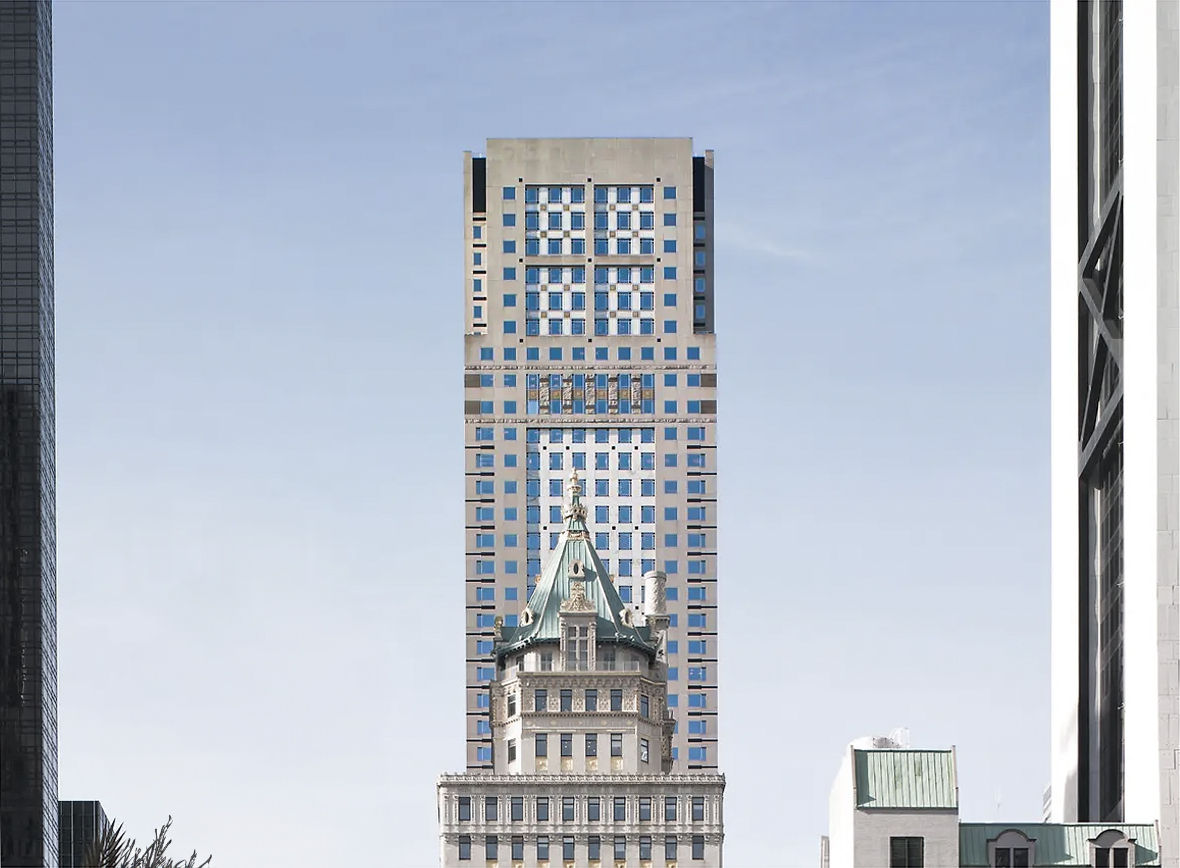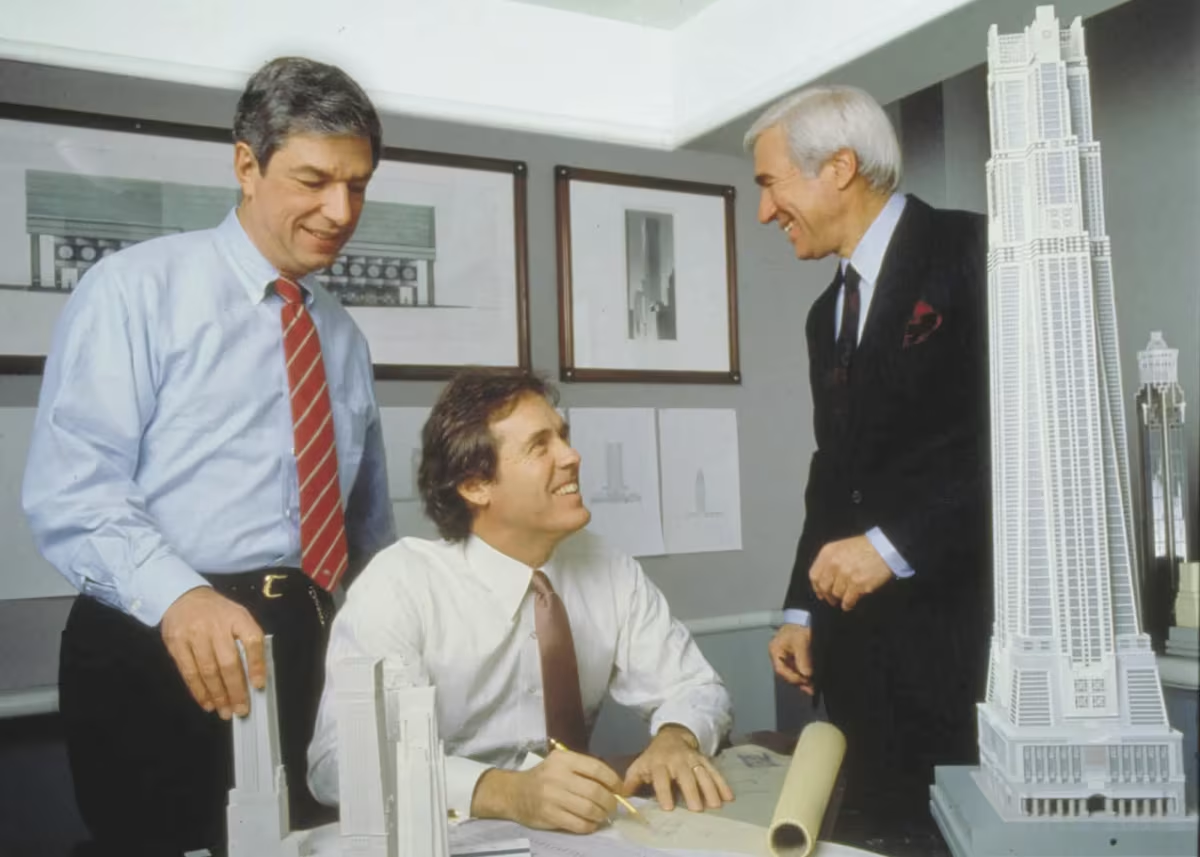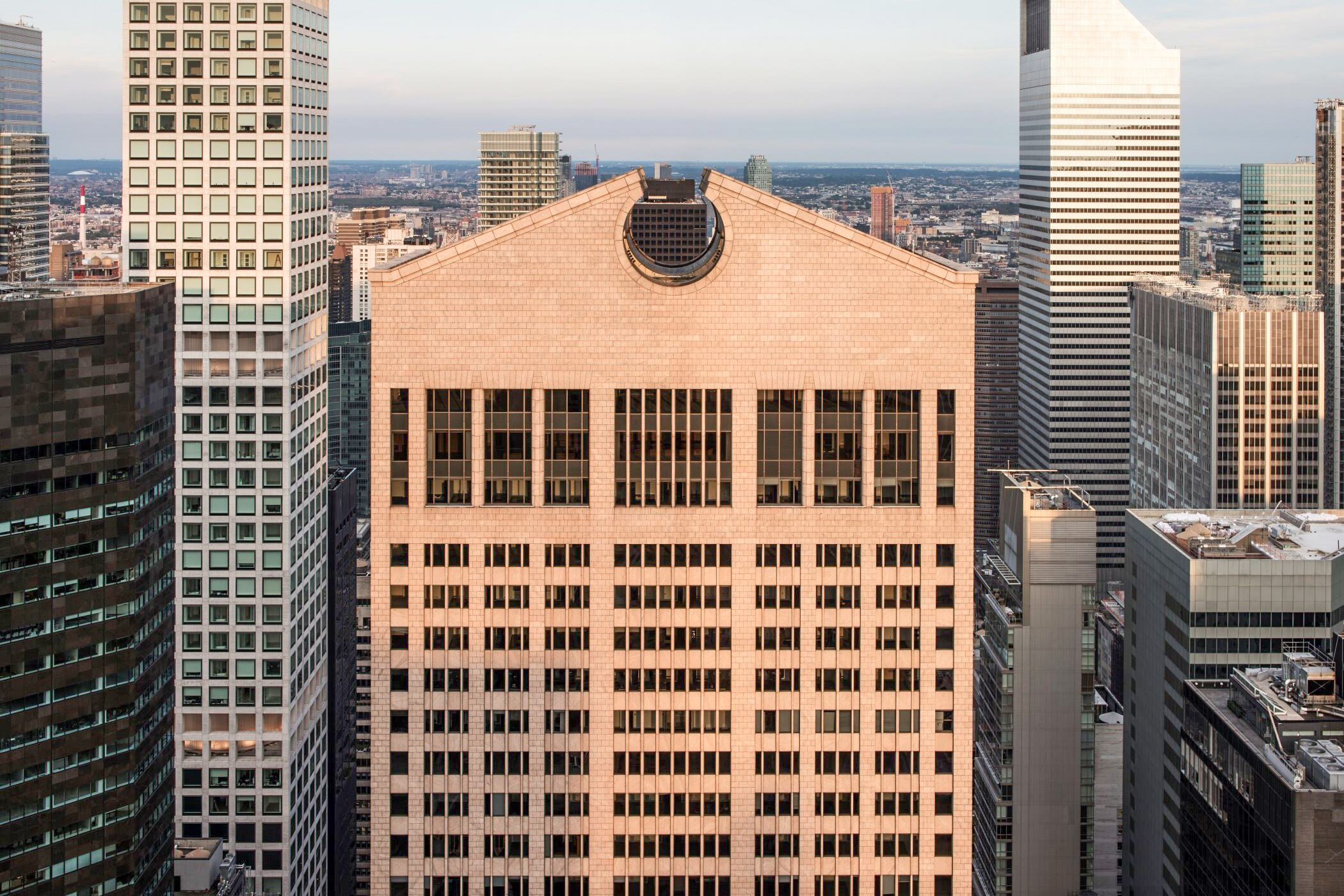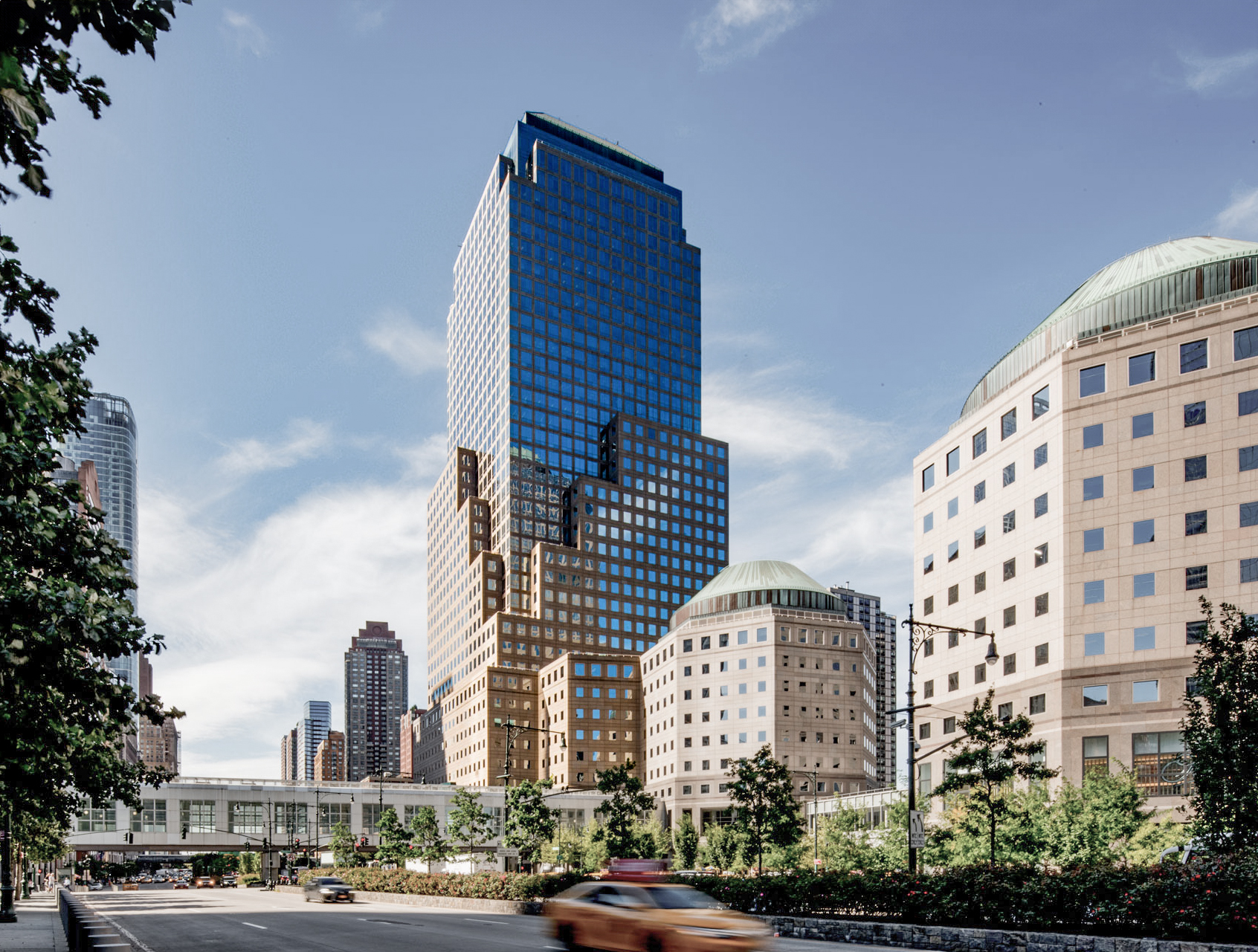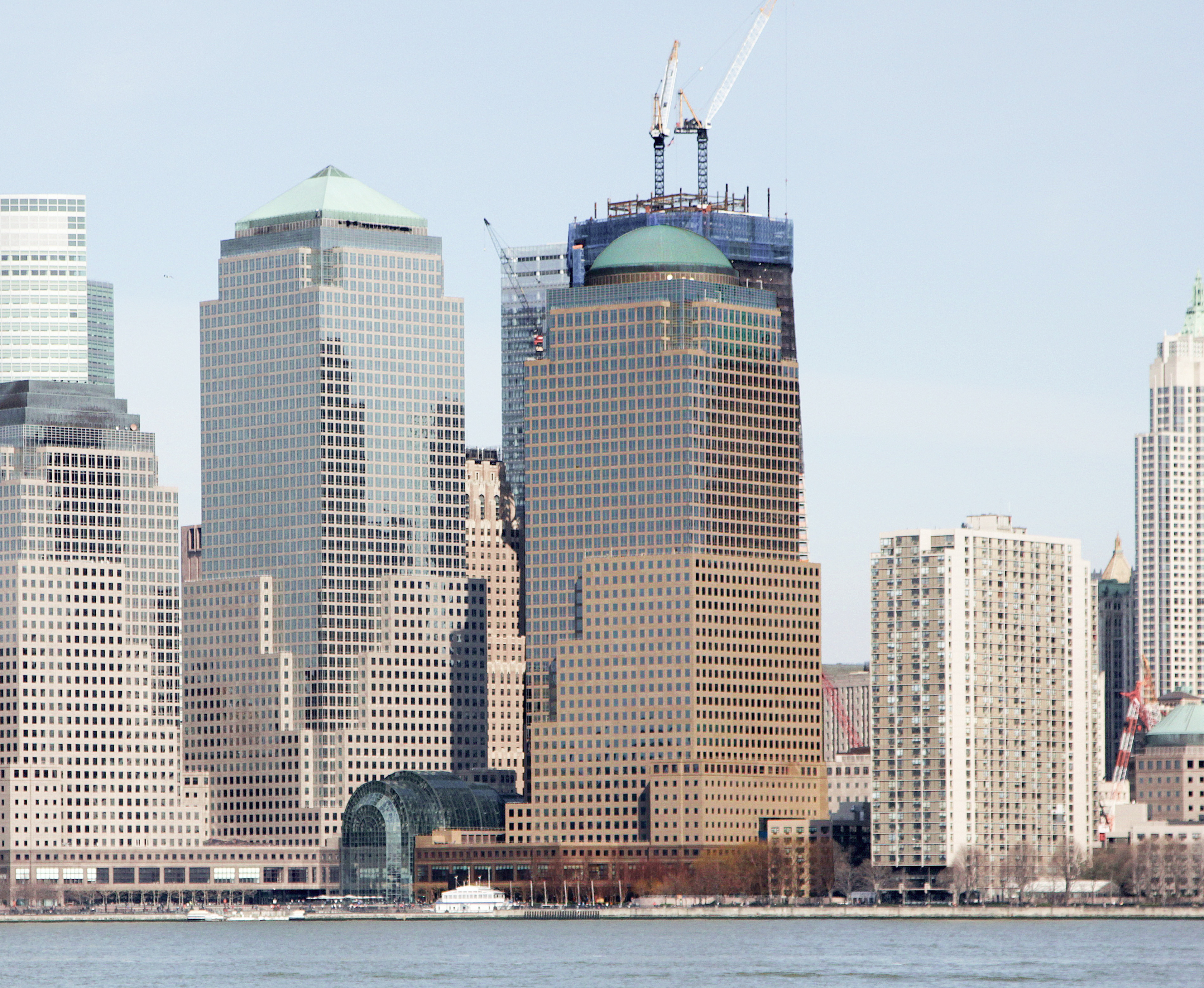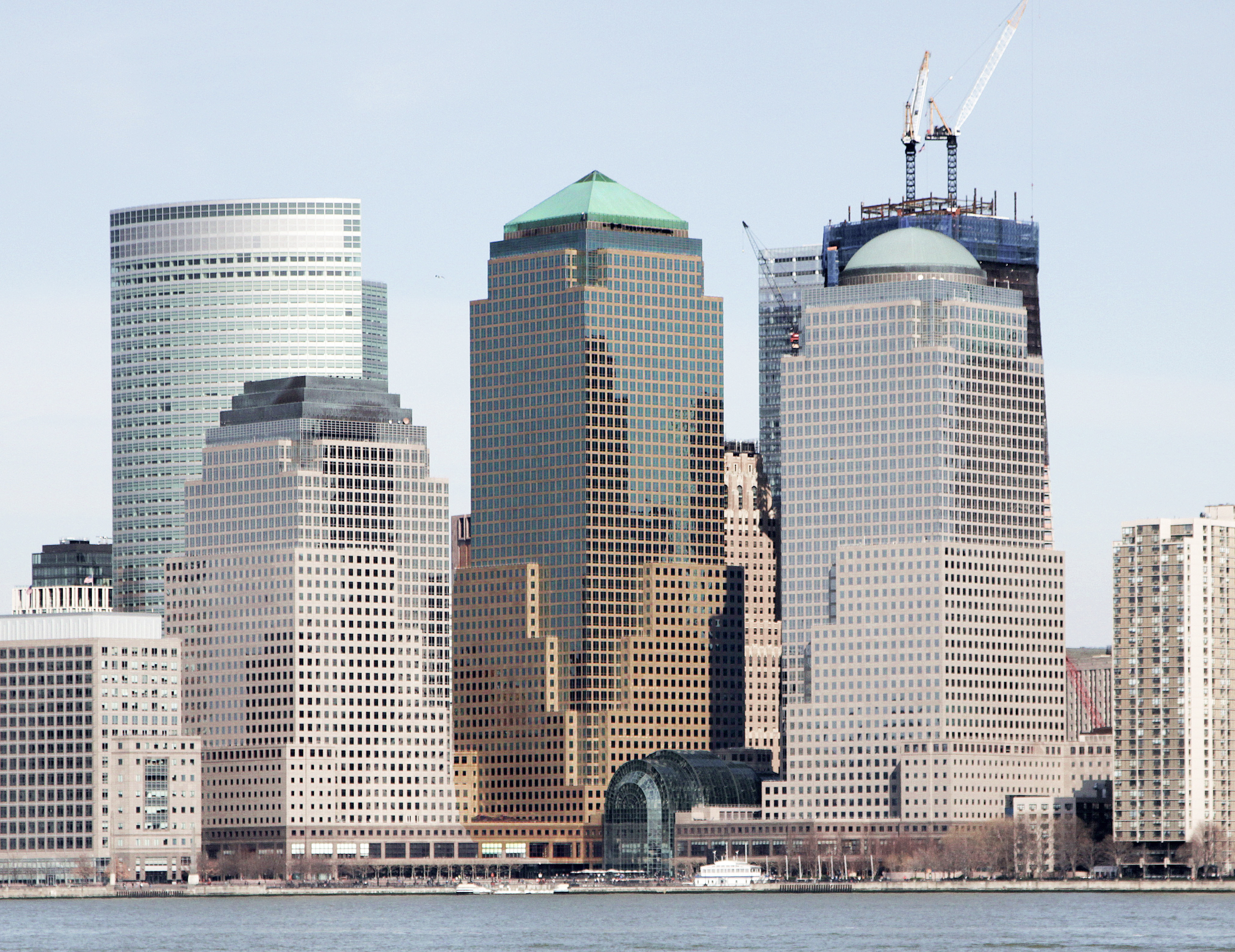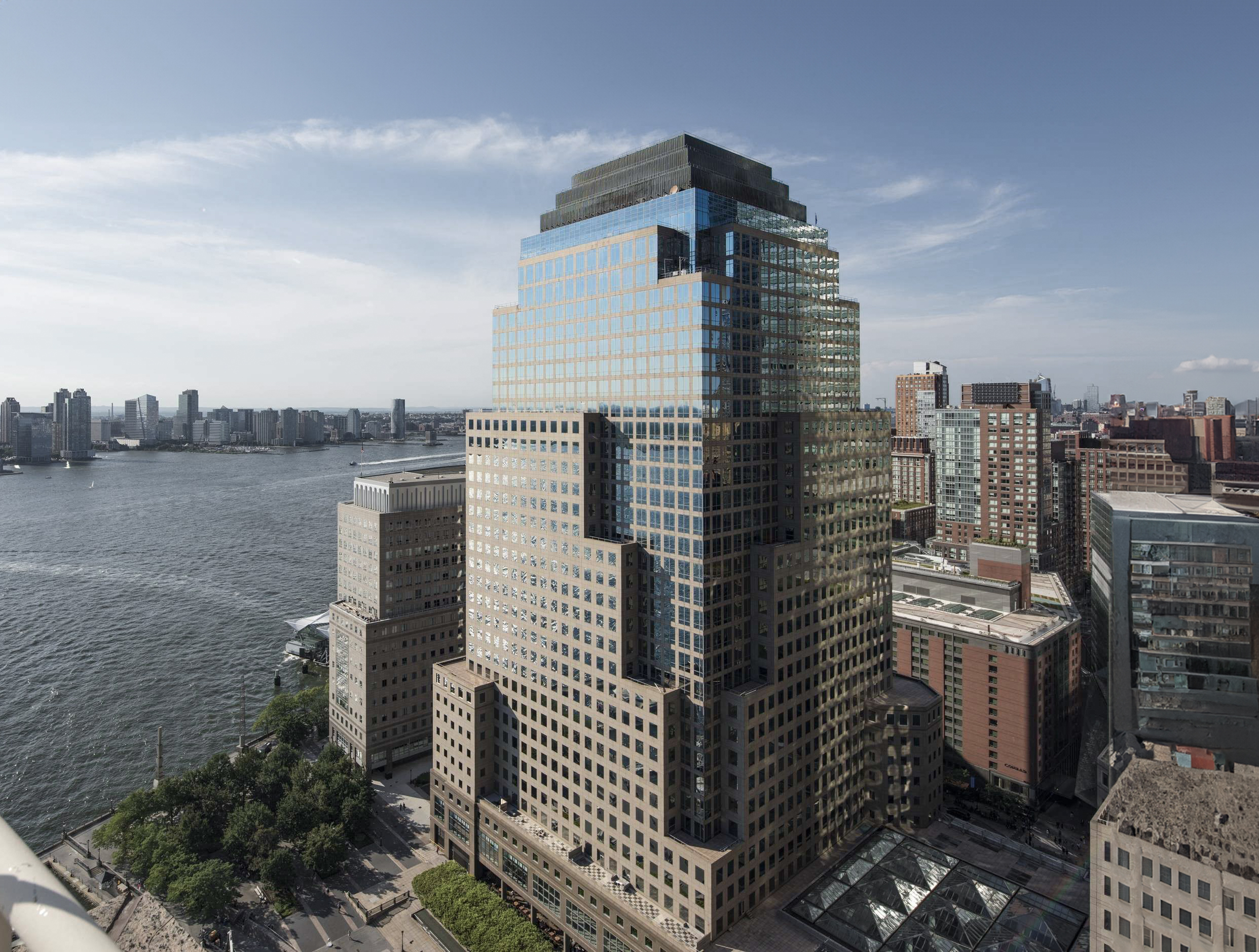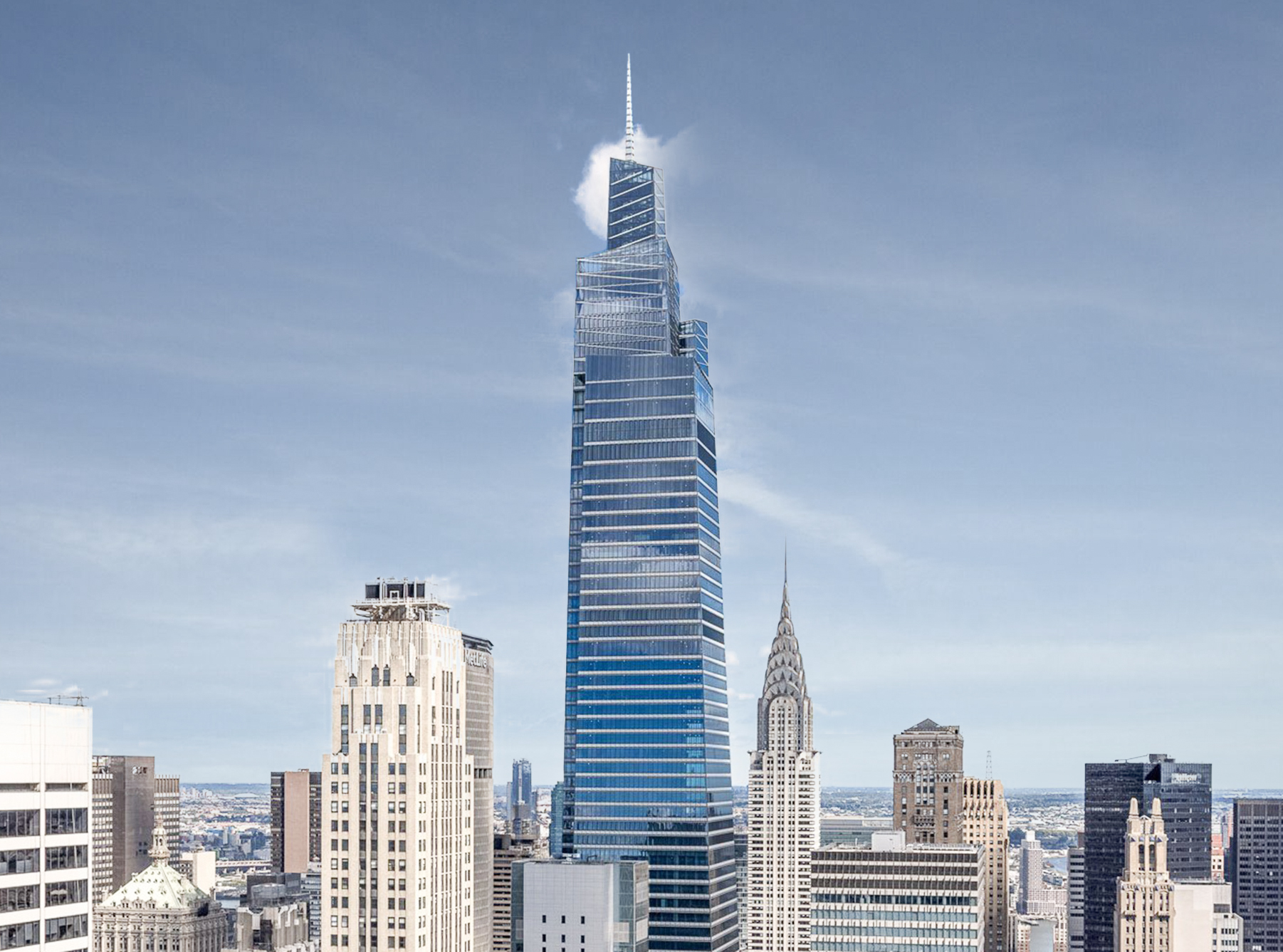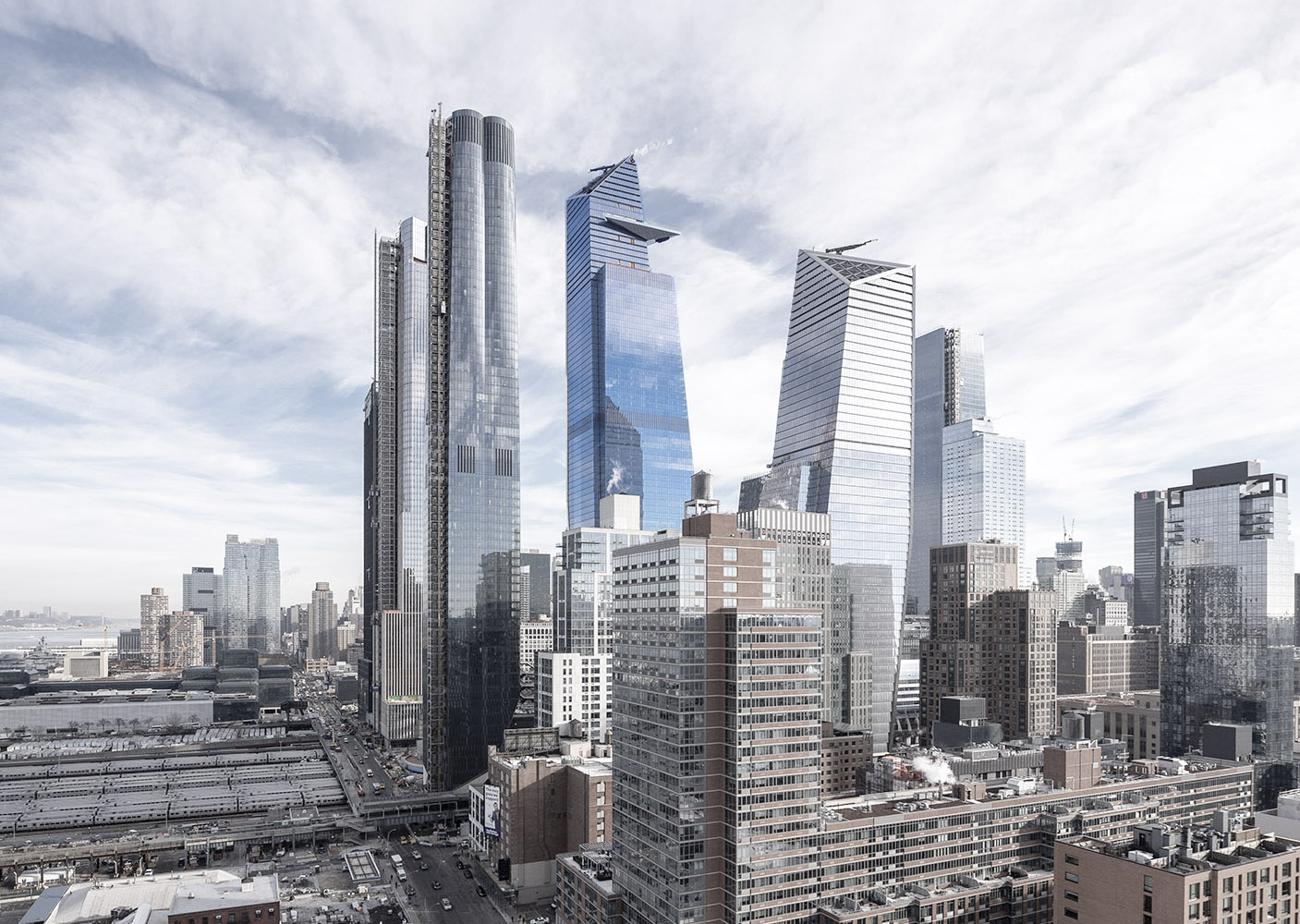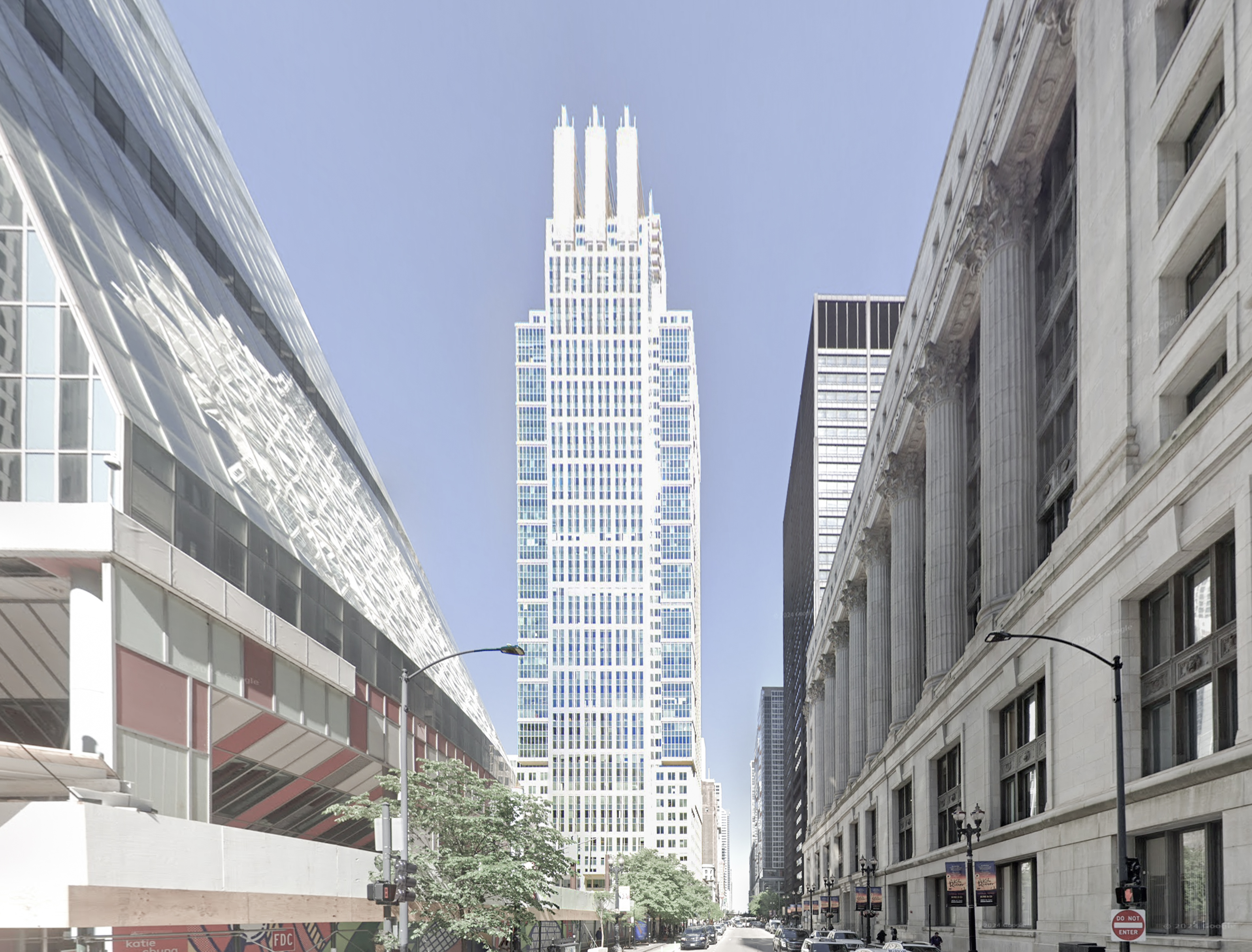The 712 Fifth Avenue Building is a Postmodernist skyscraper designed by Kohn Pedersen Fox Associates, in association with SLCE Architects, and built between 1988 and 1990, for a reported $399 million dollars, in New York, NY.
Its precise street address is 712 Fifth Avenue, New York, NY. You can also find it on the map here.
The 712 Fifth Avenue Building has received multiple architecture awards for its architectural design since 1990. The following is a list of such prizes and awards:
- Concrete Industry Board Award for Excellence in Design and Construction in 1990
- NYCE First Prize for Engineering Excellence in 1991
The building integrates into its design the iconic facades of two smaller, older buildings on Fifth Avenue, the Rizzoli building and the former Coty building, both New York City landmarks that form the base of the new tower.
The building underwent a major restoration between 2023 and 2024. The architect commissioned to undertake this restoration was Kohn Pedersen Fox Associates.
